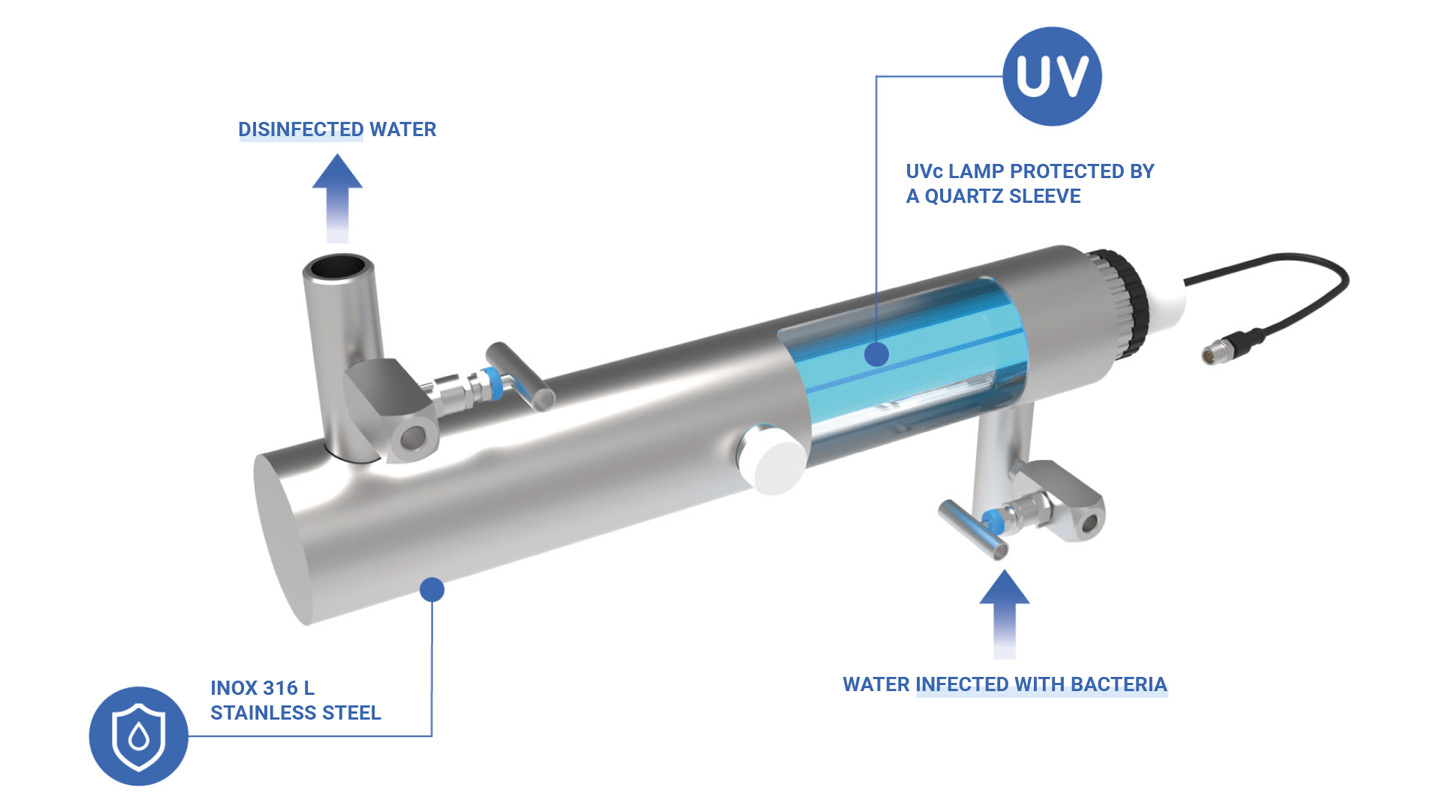Ultraviolet radiation has the capacity to destroy germs (microbes, viruses, bacteria, fungi, mold, etc.) in fluids and on surfaces. This is because UVc radiation crosses the cytoplasmic membrane of the cell and enters the nucleus. When cells are divided, DNA is unable to replicate or reproduce itself. The molecular structure of DNA is thus broken and renders the microbe harmless, without modifying the physicochemical criteria of the fluid and without generating residual pollutants. Ultraviolet treatment is an ecological solution.
Microbes, viruses and bacteria are particularly sensitive to UV rays, as well as lower plants such as algae, molds and their spores. Depending on the amount of UVc energy received, the living cell will be either sterilized (bacteriostatic effect) or destroyed (bactericidal effect) for maximum purification:
- Bacteriostatic effect: in the case of moderate absorption of UVc energy, it allows the cell to continue to live, without being able to reproduce. The cell is therefore doomed to disappear
- Bactericidal effect: in the case of energy absorption greater than a certain dose, it allows the destruction of the cell. Disorganization of the cell by bursting of nuclear membranes

Waves 315 to 400 nm (UVa) :
Acts on the tan.
Waves 280 to 315 nm (UVb) :
Used in the treatment of skin diseases.
Waves 200 to 280 nm (UVc) :
Disables bacteria, viruses and spores.
Contact us
 English
English Français
Français Español
Español
